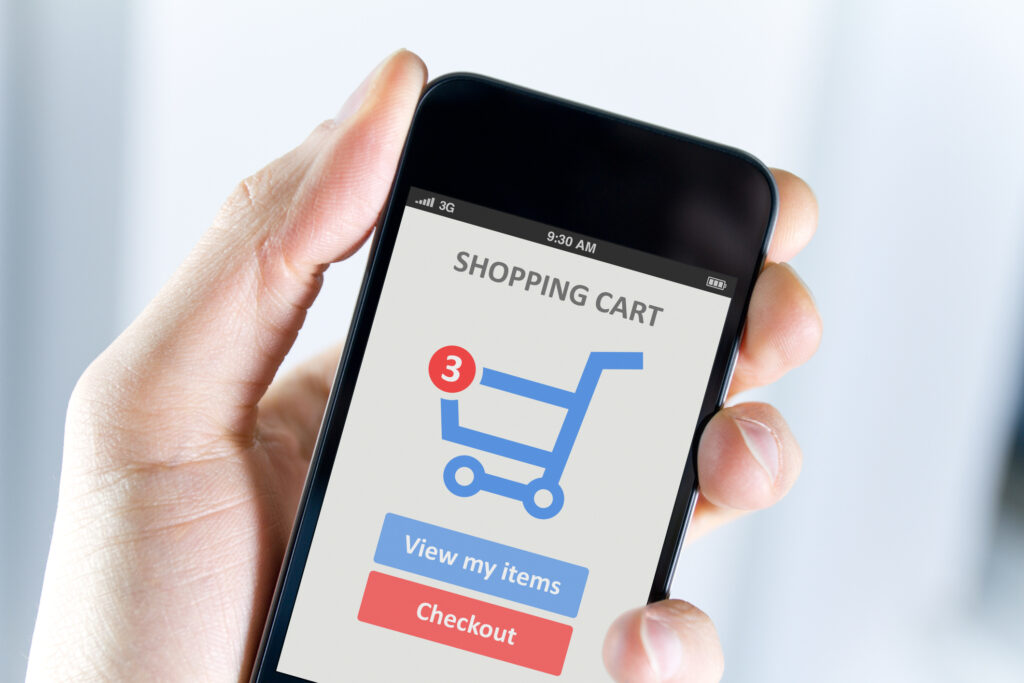As with all businesses, ecommerce companies have one overarching goal: to sell merchandise. To accomplish this, these businesses have websites that include purchasing mechanisms usually referred to as shopping carts or shopping bags. As in brick-and-mortar businesses, people visit an ecommerce store to look around, compare prices and get a closer look at the merchandise. Much to the chagrin of online retailers, many of those customers leave without buying anything.
Online vs. Physical Store Cart Abandonment
Customers have different purchasing behaviors when it comes to shopping in physical stores versus shopping in online stores. One striking difference is how people view the shopping cart. Brick-and-mortar customers take their purchases to the checkout line or give them to a sales clerk. They don’t do this until they are ready to purchase and pay. In contrast, online customers often put items in their virtual shopping carts but abandon them before completing a transaction. Why?
There are to general answers. First, online shoppers believe they are anonymous. No one is going to notice that they have left a store and abandoned their shopping cart. On the flip side, an online shopper may want to buy, but may find the checkout process is too complicated. So they give up and abandon their cart.
6 Steps to Converting Shopping Cart Users to Purchasers
By some estimates, online shoppers leave behind $260 billion in potential purchases. What can online businesses do to recoup some of these funds? Here are some suggestions:
- Live chat: This personalizes the shopping experience and provides real-time help to customers and potential customers. It also makes them buyers anonymous, which in turn can lead to shopping cart retention. You can also use live chat to find out why a customer abandoned a shopping cart.
- Customer’s email address: Put an email capture form high on the checkout page. This means you stand a better chance of getting the address even if the buyer later abandons the cart.
- Abandoned cart emails: If you have a customer’s email address, follow up. Ask real questions about the customer’s shopping experience. Use a monitored email account with a real person’s name. Include a phone number. Make sure your email messages display properly on all devices.
- Speedy follow-up: Shoppers are more likely to be receptive than if the email arrives a day after the aborted transaction. Be sure to send the follow-up email within 30 minutes of the cart being abandoned, while the transaction is fresh in the customer’s mind. Personalize the message. Online shoppers are savvy and can identify a batch email. If it feels canned, they will almost certainly ignore it.
- Later follow-up: In addition to trying to find out why a customer abandoned a cart, send an email later that gives an incentive to purchase—for example, free shipping, a discount or a small bonus gift.
- Other follow-up strategies: Don’t limit your conversion research to an immediate email about shopping cart abandonment. Try to learn why customers don’t use a wish list. Inquire as to why customers sign up for your newsletter or email announcements but never make a purchase. These customers have a high level of interest in the products you offer; why aren’t they buying?
Too Time-Consuming? Reach Out for Experienced Assistance.
These steps can be very time-consuming if you do it by yourself. Fortunately, you can take advantage of various ecommerce software packages that will help you track those customers who are interested but not purchasing anything. You can also work with ecommerce consultants who can help you determine exactly what information you need to reach your conversion goals.

